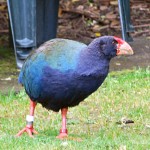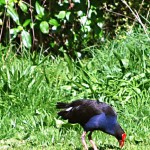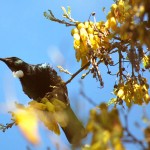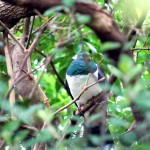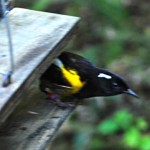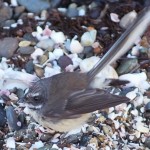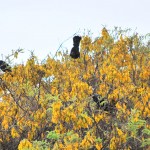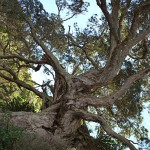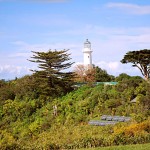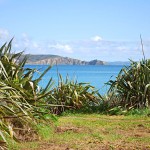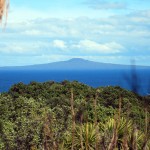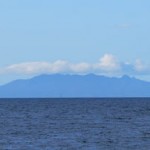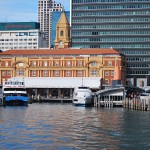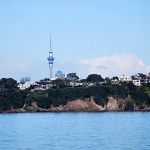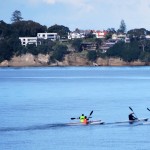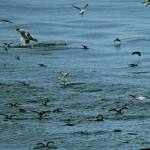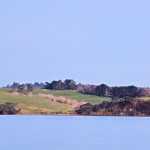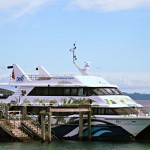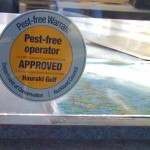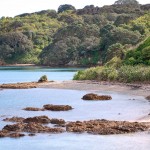Tiritiri Matangi
…is an ‘open sanctuary’ for birds. It was grazed by cattle until the 1970’s. Starting in 1984, a massive volunteer effort went into planting the island with native plants, and exterminating rats, Argentine ants, and other non-native wildlife.
The most famous inhabitants of the island are the takahe–a species of flightless birds that were thought extinct in 1900, and were re-discovered in 1948 in remote valleys of the south island.
- Takahe
- Takahe on the move
- This is a Pukeko: similar coloring, but a much more common native bird that flies and has adapted well to humans.
K’s colleague Jan connected us with a friend who is a volunteer guide. We formed a small group with a couple from Rotorua. Together we found many more birds than certainly we alone would have ever seen, including,
- the kakapo, a flightless ground parrot.
- the “morepork” which is a kind of owl.
More natives:
- Tui bird, which has a tuft of white at the throat.
- Wood pigeon. Fiona says they eat large amounts and then find somewhere peaceful to sit most of the day and digest.
- Stitchbird
- Fantail
- Several Tui birds feeding in the blossoming Kowhai (pronounced ‘co-fie’) trees.
- Pohutukawa tree
Tiritiri is 4 km from from the mainland–apparently just over the 2-3 km that rats and stoats and the like can swim. There’s a lighthouse on the island.
- Looking towards Rangitoto
- A closed sanctuary island reserve further out in the Harauki gulf
It’s a 75-minute ferry ride from Auckland. Here are some snapshots from the trip to the island, and from the island looking towards the “Shakespear” regional park (a gift of Mr. W Shakespear) on the mainland.
- Pier 4 in Auckland
- Feeding on a school of fish…
